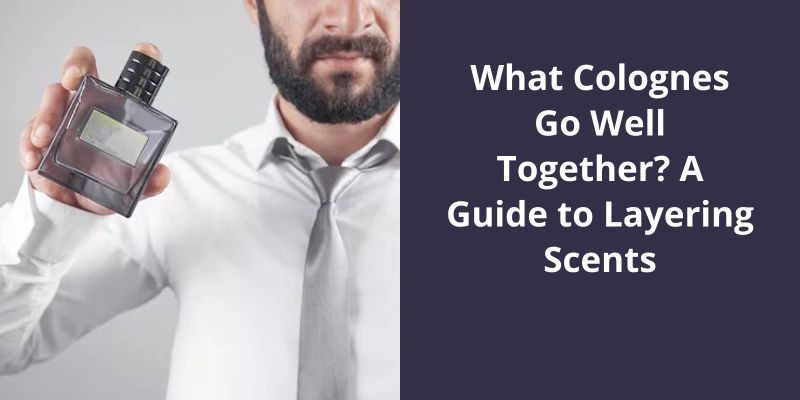Yes, you can mix Vitamin E with Tea Tree Oil. Vitamin E is known for its moisturizing effects while Tea Tree Oil has anti-bacterial properties, making the combination beneficial for skin care. It can help in moisturizing skin, healing scars, and reducing acne. The mixture should be used in moderation to avoid skin irritation. It is always recommended to do a patch test before applying it on your face or any larger area of your body.

Is Tea Tree Oil and Vitamin E Good for Face?
This combination is effective in treating various skin conditions such as psoriasis, acne, and eczema. Tea tree oil has antiseptic and anti-inflammatory properties that help in reducing redness, swelling, and irritation. Vitamin E, on the other hand, is an antioxidant that protects the skin from harmful free radicals. Combining these ingredients provides a powerful remedy to soothe and heal the skin.
Tea tree oil and vitamin E combination is also great for reducing the appearance of scars. When these ingredients are combined, they can create a potent cream to help fade scars and improve the skins overall appearance.
If you suffer from dry skin, you may find that using a cream or moisturizer that contains both tea tree oil and vitamin E can be helpful. Vitamin E helps the skin to retain moisture, which makes it appear more plump and youthful. By combining these ingredients, you can create a cream that soothes and hydrates dry, itchy skin.
While Tea Tree Oil is a popular remedy for various skin conditions, it’s important to note that it shouldn’t be mixed with certain active ingredients. Combining Tea Tree Oil with benzoyl peroxide, retinol, retinoids, tretinoin, Retin-A, salicylic acid, glycolic acid, lactic acid, vitamin C, or other active ingredients can cause skin irritation or reduce their effectiveness. It’s recommended to use Tea Tree Oil alone or consult with a dermatologist before combining it with other skincare products.
What Not to Mix With Tea Tree Oil?
Tea tree oil is a popular essential oil known for it’s many benefits. It’s extracted from the leaves of the native Australian plant Melaleuca alternifolia. It’s natural antifungal, antibacterial, and anti-inflammatory properties, making it a popular ingredient in skincare and wellness products.
While tea tree oil has many benefits, it’s crucial not to mix it with certain active ingredients. Benzoyl peroxide, for example, is a powerful acne-fighting ingredient that can cause irritation when used with tea tree oil. The combination of these two ingredients can cause dryness, redness, and peeling of the skin. Similarly, retinoids like tretinoin and Retin-A can increase skin sensitivity, making it susceptible to irritation when combined with tea tree oil.
Both ingredients are highly acidic and can cause sensitivity, redness, and irritation.
It’s best to use tea tree oil on it’s own or with compatible ingredients. When mixing it with other active ingredients, do your research, and carefully read labels. Always patch test before using new products to avoid any potential irritation or negative reactions.
When it comes to natural health remedies, combining various ingredients can often lead to a more potent and effective treatment. One such combination that’s gained popularity is mixing vitamin E capsules with coconut oil. But is it safe to do so? Let’s explore the benefits and potential risks of using these two ingredients together.
Can Vitamin E Capsule Mix With Coconut Oil?
Vitamin E has been hailed as an essential nutrient that supports good health and overall well-being. It’s rich in antioxidants that protect the body from harmful toxins and free radicals. Coconut oil, on the other hand, is a popular natural ingredient that’s been used for centuries in cooking, skincare, hair care, and other areas of wellness.
When it comes to using vitamin E capsules and coconut oil together, there’s no clear-cut answer. Some people argue that mixing these two substances can enhance their individual benefits and boost their overall effectiveness. Others are more cautious and suggest avoiding any potential risks of adverse reactions or allergic responses.
Not all vitamin E supplements are created equal, and some may contain additives or fillers that could be harmful or ineffective. Similarly, not all coconut oil products are the same, and some may be processed or refined, which can diminish their natural benefits. It’s crucial to choose high-quality products from reputable sources and read the labels carefully.
For example, combining them can create a potent anti-aging serum that can help reduce wrinkles, fine lines, and other signs of aging. It can also nourish and strengthen hair, boost immune function, and promote overall health and vitality.
Always test a small patch of skin and choose high-quality products from reputable sources. By following these guidelines, you can enjoy the benefits of these two powerful natural ingredients and take a step towards a healthier, more radiant life.
How to Choose the Right Coconut Oil Product
When choosing a coconut oil product, consider factors such as the processing method, purity, and packaging. Look for products that are cold-pressed and unrefined, as they’re less likely to contain harmful additives. Also, opt for products that come in airtight, opaque containers to protect it from oxidation. Reading product labels and researching the brand can also help you make an informed decision.
So, it’s always a good idea to mix them with a carrier oil like vitamin E oil. But while mixing essential oils with vitamin E oil may seem like a simple solution, there are some things you need to keep in mind to ensure safety and effectiveness.
Can I Mix Vitamin E Oil With Essential Oils?
However, when you mix essential oils with vitamin E oil, you create a safe and effective blend that can provide nourishment to your skin while also delivering the benefits of aromatherapy. Vitamin E oil is known for it’s antioxidant properties, which can help protect your skin from damage caused by free radicals. It can also help improve skin hydration and elasticity, making it a great ingredient to use as a carrier oil for essential oils.
Some popular choices for aromatherapy include lavender, peppermint, lemongrass, eucalyptus, and tea tree oil. Once you’ve your oils, measure out the appropriate amounts and mix them with vitamin E oil in a clean glass bottle. You can experiment with different oil ratios and combinations to create a customized blend that suits your needs.
Vitamin E oil is also a natural preservative, which means that it can help prevent your blend from going rancid or spoiling.
Always test a small area of skin before applying a blend to a larger area to make sure that you don’t have an allergic reaction or skin irritation. And if youre pregnant or nursing, it’s important to talk to your doctor before using essential oils, as some oils can be harmful to a developing fetus.
Whether youre using it for massage, inhalation, or diffusing, a well-crafted blend can help you feel relaxed, invigorated, or focused, depending on the oils that you use. So take some time to experiment with different blends and find the perfect mix for your needs!
Tips for Creating the Perfect Aromatherapy Blend With Vitamin E Oil and Essential Oils
- Choose your essential oils
- Consider the benefits of each oil
- Determine the ratios you want to use
- Measure your oils carefully
- Add vitamin E oil as a carrier oil
- Blend your oils together
- Store your blend in a dark, cool place
- Enjoy the benefits of your aromatherapy blend
Using natural oils has become a popular trend in hair care as they’ve proven to be effective in promoting hair growth, reducing hair fall, and improving overall hair health. Tea tree oil and vitamin E oil, in particular, have been gaining popularity as a combination therapy for various hair conditions. However, the question arises whether mixing these oils will yield any benefits or if it would cause any damage to hair.
Can I Mix Tea Tree Oil With Vitamin E Oil for Hair?
Tea tree oil and vitamin E oil are both natural oils with a range of potential benefits for hair health. Tea tree oil is known for it’s antibacterial and anti-fungal properties, which may help to combat dandruff and other scalp infections. Vitamin E oil, on the other hand, is a powerful antioxidant which may help to nourish hair and promote healthy growth.
Furthermore, without proper dilution, tea tree oil can be irritating to the skin and may even cause itching, redness, and swelling.
This can be done by mixing one teaspoon of tea tree oil with one tablespoon of a carrier oil such as coconut oil or jojoba oil. Additionally, it’s important to patch test the mixture on a small area of skin before applying it to your scalp, in order to check for any adverse reactions.
To make a tea tree oil and vitamin E oil mixture for your hair, you can combine one tablespoon of coconut oil and two tablespoons of vitamin E oil from a capsule. Apply this mixture to your hair, focusing on the scalp and roots, and massage it in gently. Leave the mixture on your hair for at least 2 to 3 hours, or overnight if desired. Rinse the mixture out thoroughly with warm water and shampoo as usual.
It’s also important to note that natural remedies aren’t a substitute for medical treatment, and anyone with serious scalp conditions should seek advice from a healthcare professional.
Other Benefits of Tea Tree Oil for Hair Health
Tea tree oil has various benefits for hair health, such as acting as a natural remedy for dandruff and dry scalp, promoting hair growth, and adding shine to hair. It can also soothe an itchy scalp and help to prevent hair loss by removing buildup and dirt from hair follicles.
Tea tree oil is a versatile essential oil that’s been used for centuries due to it’s antibacterial and antifungal properties. However, it’s essential to dilute tea tree oil with a carrier oil to avoid skin irritation and burning sensations. In this article, we will explore the best carrier oils that you can mix tea tree oil with to maximize it’s benefits and avoid the adverse effects.
What Is the Best Thing to Mix Tea Tree Oil With?
Tea tree oil has gained popularity over the years due to it’s myriad of benefits as a natural remedy. It’s used for treating various skin conditions, including acne, eczema, and psoriasis. However, using tea tree oil in it’s undiluted form can irritate the skin and cause adverse reactions. Thats why it’s crucial to know the best mixture that will complement it’s potency without causing harm.
One of the best things to mix tea tree oil with is a carrier oil. Carrier oils are plant-based oils that evenly distribute and dilute essential oils like tea tree oil. Olive oil, coconut oil, and almond oil are some of the most commonly used carrier oils.
Olive oil is a great carrier oil for tea tree oil because it’s moisturizing and healing properties that help soothe dry and irritated skin. It’s rich in antioxidants that make it ideal for treating conditions such as psoriasis and eczema. Coconut oil, on the other hand, has anti-inflammatory and antimicrobial properties that complement tea tree oils ability to fight acne-causing bacteria. It’s also rich in vitamin E, making it an excellent moisturizer for dry and flaky skin.
It’s rich in essential fatty acids, making it a great choice for people with oily skin. It also has a light texture that makes it easy to absorb into the skin quickly. When mixing tea tree oil with almond oil, it’s best to use in equal proportions for the best results.
It’s recommended to add 12 drops of carrier oil for every 1-2 drops of tea tree oil to ensure safe and effective use.
Different Types of Carrier Oils and Their Specific Benefits for Skin Care
- Sweet almond oil – hydrates and nourishes the skin, helps reduce acne and scars
- Coconut oil – moisturizes and soothes dry skin, reduces inflammation and redness
- Jojoba oil – deeply moisturizes the skin, regulates sebum production, reduces fine lines
- Rosehip oil – brightens and evens out skin tone, reduces the appearance of scars and wrinkles
- Argan oil – rich in antioxidants, hydrates and softens the skin, minimizes the signs of aging
- Grapeseed oil – lightweight and non-greasy, reduces dark circles and puffiness, tightens and tones the skin
- Avocado oil – deeply hydrates and softens the skin, promotes collagen production, soothes inflammation
- Tamanu oil – anti-inflammatory and antibacterial, helps heal wounds and scars, soothes eczema and psoriasis
Conclusion
In conclusion, it’s safe and highly recommended to mix Vitamin E with Tea Tree Oil. The combination of these two powerful ingredients is an excellent solution for individuals seeking relief from dry skin. This potent cream can help moisturize and strengthen your skin while providing much-needed relief. With regular use, the cream can provide an effective solution to a range of non-optimum skin conditions. So, make sure you give it a try and experience the transformative effects of this fantastic mix!





